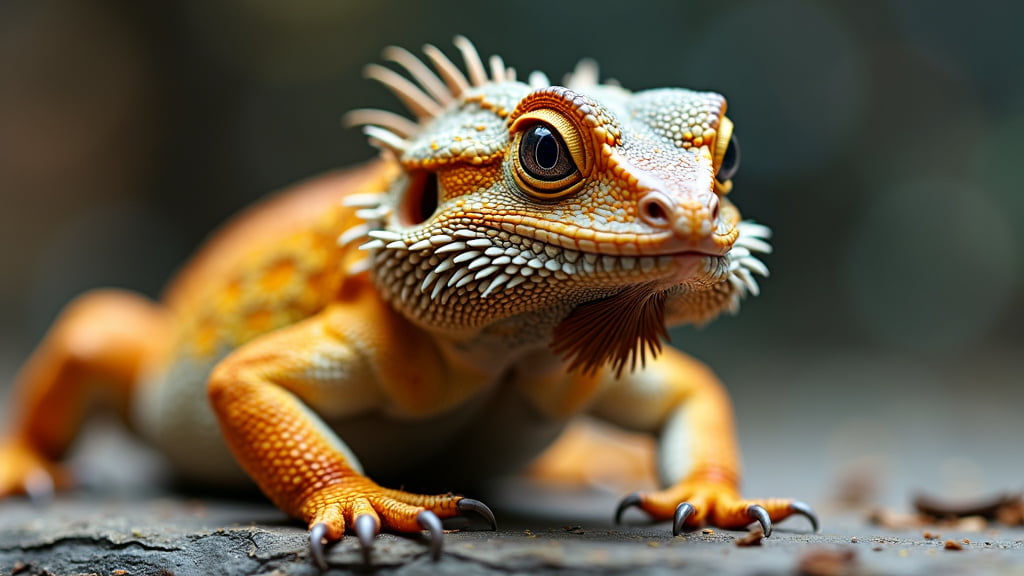Is your bearded dragon starting to look a little flaky? No need to worry—this is a completely natural part of their growth cycle called shedding. Whether you’re a seasoned reptile owner or new to the world of these fascinating lizards, understanding the bearded dragon shedding process can be crucial in ensuring your pet’s health and well-being. In this blog post, we’ll dive into the stages, signs, and best practices to help your bearded dragon shed comfortably. Let’s embark on this journey together!
What is Shedding?
Why Do Bearded Dragons Shed?
Bearded dragons, much like other reptiles, shed their skin as they grow. This process—known as ecdysis—ensures that they have sufficient space to develop and can get rid of old, dull skin, revealing a fresh layer beneath. Aside from growth, shedding helps to remove parasites and allows the dragon to maintain its health more effectively.
How Often Do Bearded Dragons Shed?
The frequency of shedding depends on several factors such as age, diet, environment, and overall health. Younger bearded dragons can shed as frequently as every few weeks due to their rapid growth. In contrast, adult dragons shed less frequently, perhaps a few times a year, as their growth rate slows down.
The Stages of Shedding
Pre-shed Stage
Before shedding, your bearded dragon will exhibit some fairly obvious signs:
- Skin begins to look dull or grey
- Eyes may appear slightly cloudy
- Behavioural changes like lethargy or increased irritability
This stage can last anywhere from a few days to a week or more, depending on the dragon’s age and health.
Active Shedding Stage
During this stage, the skin will visibly peel away:
- Pieces of skin may hang off the body
- Your dragon might rub against objects to dislodge the shedding skin
- Increased grooming behaviour using their own limbs
While it’s usually best to let the process happen naturally, there are things you can do to assist your reptilian friend.
Post-shed Stage
Post-shedding, your bearded dragon’s skin should appear brighter and healthier.
- Double-check for any retained shed, especially around the toes and tail, as these can cause circulation issues if left unattended
- Offer a bit more hydration to help them recover
How to Assist Your Bearded Dragon During Shedding
Maintaining Ideal Tank Conditions
Optimal humidity levels are crucial for a smooth shedding process. Ideally, you should maintain a humidity level between 30-40%. However, increasing this slightly (up to 50%) can aid older dragons during their shedding period.
Hydration and Bathing
Ensuring your bearded dragon is well-hydrated can make a huge difference:
- Offer frequent baths: A shallow, lukewarm bath can help soften the shedding skin, making it easier to come off.
- Misting: Lightly misting your dragon’s enclosure can also support hydration. Ensure the enclosure is well-ventilated to prevent mould growth.
Nutrition
A balanced diet rich in vitamins and minerals can support the shedding process:
- Calcium supplements: Essential for bone health and overall well-being.
- Varied diet: Include greens, vegetables, and occasional fruits to provide necessary nutrients.
Handling and Gentle Assistance
Although it is crucial to let your dragon shed naturally, you can gently assist if necessary:
- Avoid peeling the skin manually: This can lead to injury.
- Use a soft-bristled toothbrush: Gently brush areas where the skin is stuck, but never force it.
When to Seek Veterinary Advice
Signs of Complications
While shedding is a natural process, there can be complications:
- Retained shed: If you notice skin still attached to toes, tail, or around the eyes
- Behavioural issues: Excessive lethargy, stress, or refusal to eat
- Skin infections: Redness, swelling, or sores
In such cases, it’s essential to seek veterinary advice. Vets can provide targeted treatments to address these issues effectively.
Conclusion
Shedding is a natural and essential part of your bearded dragon’s life. Understanding the stages of shedding and how to assist can ensure your pet remains happy and healthy. Remember to monitor tank conditions, ensure hydration, and provide proper nutrition to ease the shedding process. If you observe any complications, don’t hesitate to consult a vet.
Feel free to browse other articles on bearded dragons on our blog for more comprehensive care tips. Also, check out this external resource for more detailed information on bearded dragon care.

